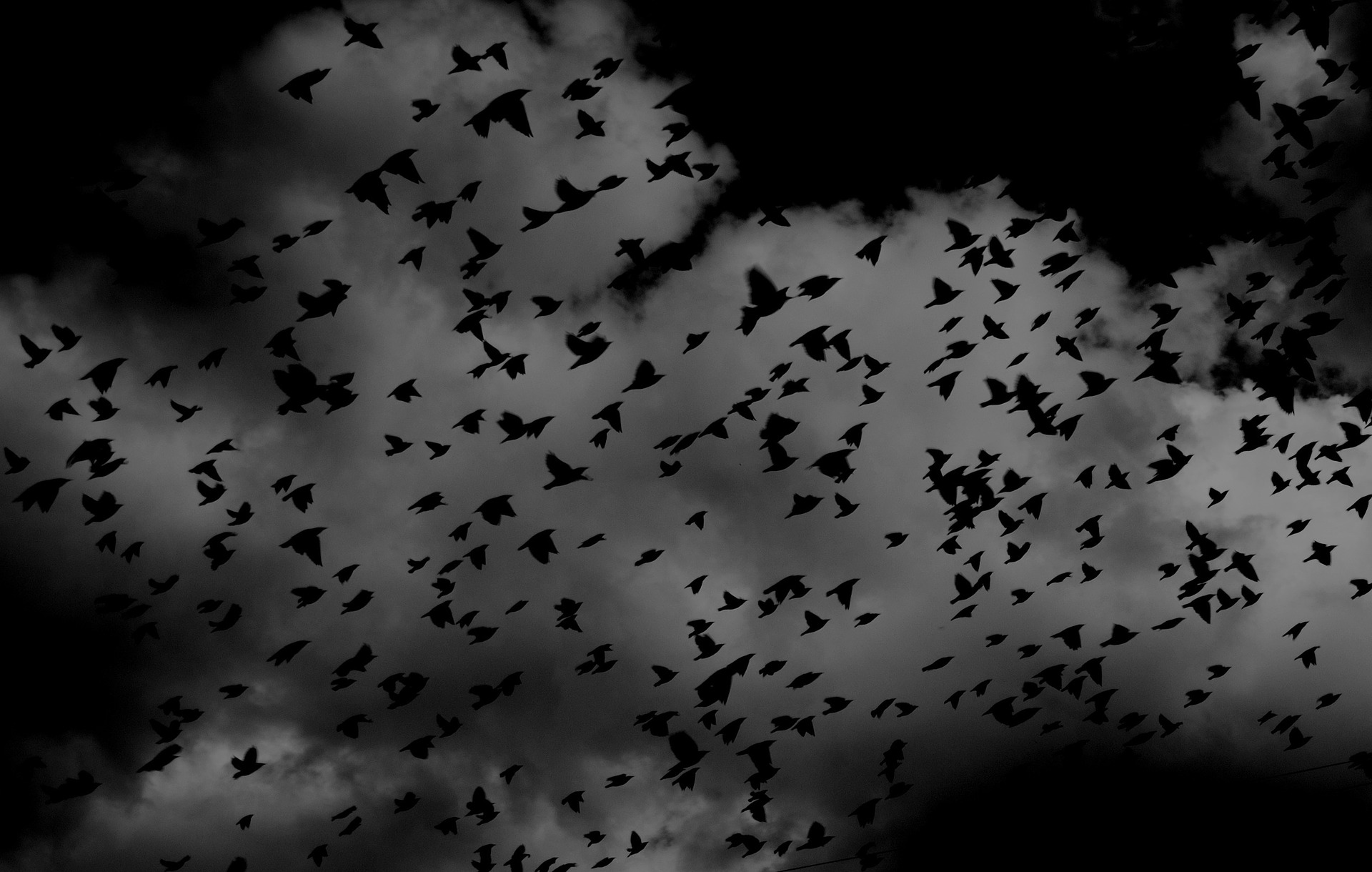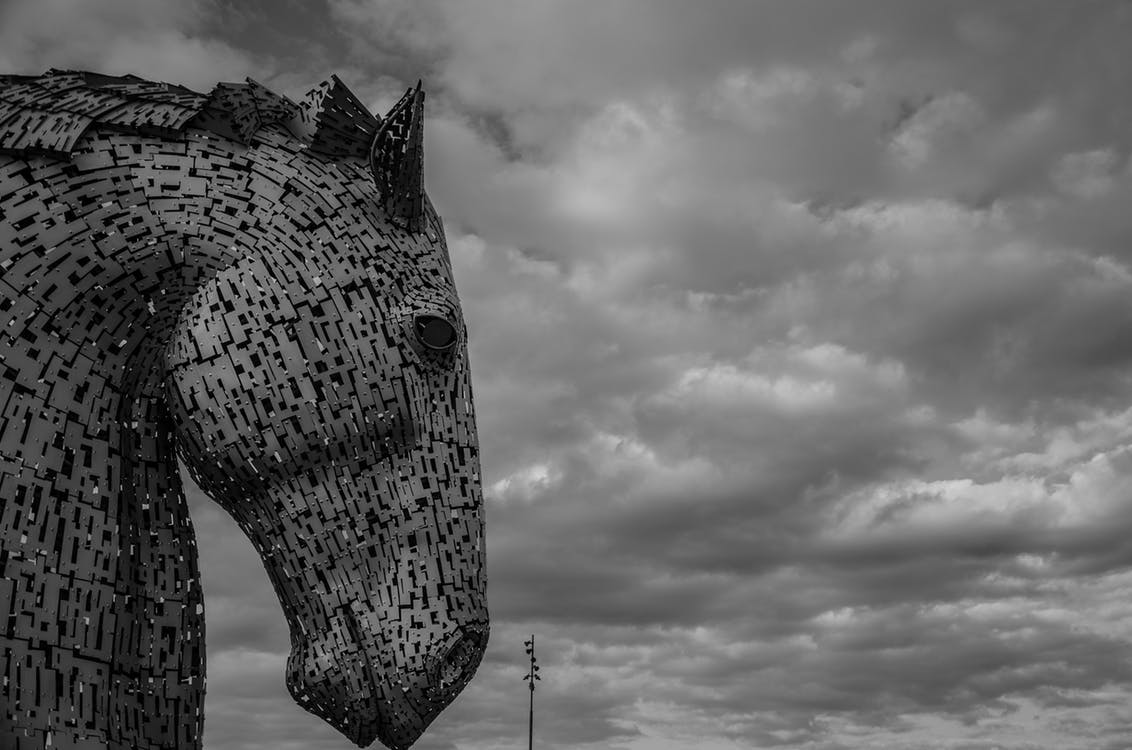Celtic folklore has given us some of the darkest and most frightening tales in folkloric history: three-headed monsters, headless horsemen, famine-spreaders, joint-eaters and spirits of terror.
One of the most fascinating and evil groups to form part of The Unseelie Court are The Sluagh Sidhe, or ‘Fairy Host’: spirits of the unforgiven or restless dead who soared the skies at night searching for humans to pick off. Some believed them to be Fallen Angels. Others thought them the spirits of unbaptized children who had returned to seek their revenge.
Dislodged souls
Robert Kirk provided one of the earliest reports of the Sluagh in about 1690, saying ‘our Highlanders making still a Distinction betwixt Sluagh Saoghalta [Earthly Host] and Sluagh Sith, averring that the Souls goe to the Sith when dislodged.’
Accounts collected by folklorists in the Scottish Highlands and Islands in the 19th century confirmed that the Sluagh were believed to be ‘the spirits or mortals who had died’. In some accounts, the Host were armies fighting battles in the sky. On the Isle of Barra, Alexander Carmichael was told that the spirits fought great battles in the air and that, ‘their crimson blood may be seen staining rocks and stones. ‘Fuil nan sluagh’, the blood of the hosts is the beautiful red ‘crotal’ of the rocks, melted by frost.’
In other stories, the Sluagh were not so much an army as a scourge. They took the form of gusts of wind, burning skin and causing boils. Alternatively, the Host were winged, like terrible and destructive birds. One of the storytellers to whom Carmichael spoke said that the spirits fly about ‘in great clouds, up and down the face of the world like the starlings, and come back to the scenes of their earthly transgressions’. In other accounts the Sluagh appear as a whirlwind of flapping wings and undulating shadows, like a flock of crows or ravens.
The Sluagh were believed to fly from the west in ‘the mouth of night’, seeking souls to steal. When a person lay dying, the door and the windows on the west side of the house were therefore secured to keep the spirits out. The most dangerous time, of course was Samhain, the liminal time, when the gates of hell would open and the Host would ride forth. Woe betide anyone who was out alone.

Returned exhausted and prostrate
Sometimes the humans were returned, but they were never the same again. In Benbecula, Carmichael was told of how the Sluagh carried humans off into the skies, returning them ‘exhausted and prostrate’. According to one story, ‘The beautiful daughter of a king of France was taken up by the ‘hosts,’ and carried about in the air, over lands and seas, continents and islands, till they came to the little island of Heistamal, behind Creagorry, in Benbecula, where they laid her down in such an injured state that she died from the hard treatment; not, however, till she had told about the lands to which she had been carried, and of the great hardships she had endured while travelling through space.’
It was when reading such accounts that I became interested by the idea of the supernatural being used to mask more human abuse, and possibly episodes of mental illness. Several stories talk of men being whisked away and returned a day or two later, confused, exhausted and not remembering where they’d been. Had they been hitting the whisky bottle a little too hard, or had they perhaps been suffering from mental health issues that at the time weren’t understood?
Sometimes the stories are profoundly disturbing. In 1911, Walter Evans-Wentz published the story of a boy said to have been taken by the Sluagh. He was found the next day at the back of a house, his lifeless body said to have dropped from a “great height”. This did not sound to me like fairies, but suggested a far more mundane type of evil.

The Sluagh in Fiction and Film
This is an idea that I explored in my novel, The Story Keeper, set on the Isle of Skye in 1857. Various real folk tales are used within the book, but it the Sluagh who form the central motif. When young girls begin to go missing from the island, it is the Host that the local crofters blame, believing they have taken the girls into the earth. As the novel progresses, the protagonist, and the reader, must determine whether the vanishings are indeed the work of supernatural beings, or of something else entirely.
Others too have been inspired by the Sluagh. 2020 will see the release of The Haunting of Grady Farm, a found footage horror film that re-imagines the Sluagh and places the tale in rural Florida. In the Legacy of Kain video game series, The Sluagh feature as one of the enemy creatures, presented as scavenging beasts that prey on souls.
Conclusion
The most recent account I have been able to find of The Sluagh is from the early twentieth century. That is not to say, however, that these creatures no longer exist. Avoid travelling the roads alone in the dead of night, especially at Halloween. And if you glimpse a flock of black birds overhead, make sure they are what they seem.
REFERENCES & FURTHER READING
Briggs, Katharine (1976). An Encyclopedia of Fairies, Hobgoblins, Brownies, Boogies, and Other Supernatural Creatures. Harmondsworth, Middlesex: Penguin Books.
Campbell, John Gregorson (1900). Superstitions of the Highlands and Islands of Scotland. Glasgow: James MacLehose and Sons.
Carmichael, Alexander (1900). Carmina Gadelica.
Campbell, John Francis (1862). Popular Tales of the Western Highlands.
Evans-Wentz, Walter (1911). Fairy Faith in Celtic Countries.
Amy Gazin-Schwartz, Cornelius J. Holtorf (2005). Archaeology and Folklore.



